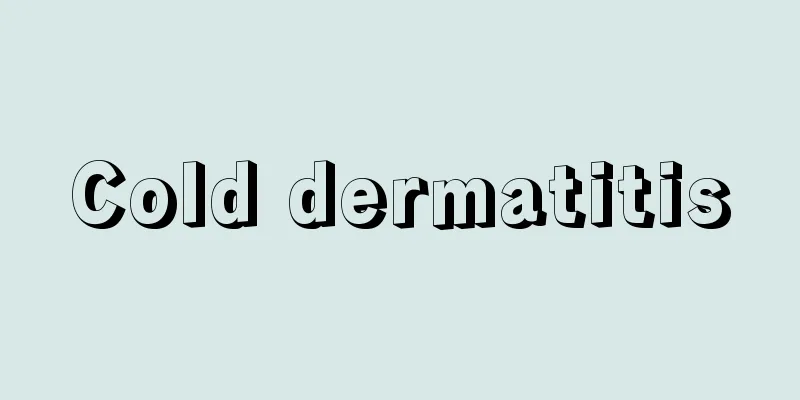What is cervical spondylosis? Causes of cervical spondylosis

|
In recent years, with the increasing work and study pressure, many white-collar workers and students have suffered from severe cervical spondylosis, which seriously affects people's normal life. So what exactly is cervical spondylosis? In fact, cervical spondylosis is also called cervical spondylosis, which is a general term for cervical osteoarthritis, hypertrophic cervical spondylitis, cervical radiculitis, and cervical disc herniation. 1. What is cervical spondylosis Cervical spondylosis, also known as cervical spondylosis, is a general term for cervical osteoarthritis, hypertrophic cervical spondylitis, cervical radiculitis, and cervical disc herniation. It is a disease based on degenerative pathological changes. It is mainly caused by long-term strain of the cervical spine, bone hyperplasia, or herniated disc, ligament thickening, which leads to compression of the cervical spinal cord, nerve roots or vertebral arteries, resulting in a series of clinical syndromes of functional disorders. It manifests as vertebral instability and loosening; nucleus pulposus protrusion or extrusion; bone spur formation; ligament hypertrophy and secondary spinal canal stenosis, etc., which stimulate or compress adjacent nerve roots, spinal cord, vertebral arteries, cervical sympathetic nerves and other tissues, causing a series of symptoms and signs. Cervical spondylosis can be divided into: cervical type cervical spondylosis, nerve root type cervical spondylosis, spinal cord type cervical spondylosis, vertebral artery type cervical spondylosis, sympathetic nerve type cervical spondylosis, and esophageal compression type cervical spondylosis. 2. Causes of cervical spondylosis 1. Degeneration of the cervical spine Degenerative changes of the cervical spine are the main cause of cervical spondylosis, among which the degeneration of the intervertebral disc is particularly important and is the primary factor in the degeneration of the cervical spine structures. From this, a series of pathological anatomical and pathophysiological changes of cervical spondylosis have evolved. ① Degeneration of the intervertebral disc; ② The appearance of the ligament-disc space and hematoma formation; ③ The formation of bone spurs on the edge of the vertebral body; ④ Degeneration of other parts of the cervical spine; ⑤ Reduction in the sagittal diameter and volume of the spinal canal. 2. Developmental cervical spinal stenosis In recent years, it has been confirmed that the inner diameter of the cervical spinal canal, especially the sagittal diameter, is closely related not only to the occurrence and development of cervical spondylosis, but also to the diagnosis, treatment, selection of surgical methods and prognosis of cervical spondylosis. Some people have severe cervical degeneration and obvious osteophyte hyperplasia, but they do not develop the disease. The main reason is that the sagittal diameter of the cervical spinal canal is wide and there is a large compensatory space in the spinal canal. For some patients, cervical degeneration is not very serious, but the symptoms appear early and are more severe. 3. Chronic strain Chronic strain refers to various excessive activities that exceed the maximum range of normal physiological activities or the local tolerance value. Because it is different from obvious trauma or accidents in life and work, it is easy to be ignored, but it has a direct relationship with the occurrence, development, treatment and prognosis of cervical spondylosis. The generation and cause of this kind of strain mainly come from the following three situations: (1) Improper sleeping position. An improper sleeping position will inevitably cause imbalance of the paraspinal muscles, ligaments and joints because it lasts for a long time and cannot be adjusted in time when the brain is in a resting state. (2) Improper working posture. A large amount of statistical data shows that the incidence of cervical spondylosis is particularly high among people who have a small workload and low intensity of work but are sitting, especially those who work with their heads down. These people include houseworkers, embroiderers, office staff, typists, assemblers on instrument assembly lines, etc. (3) Inappropriate physical exercise. Normal physical exercise is good for health, but activities or exercises that exceed the neck's tolerance, such as handstands or somersaults with the head and neck as the weight-bearing support points, can increase the load on the cervical spine, especially without proper guidance. 4. Congenital malformation of the cervical spine When performing health examinations or comparative research radiographs on the cervical spine of normal people, various abnormalities are often found in the cervical spine segments, of which obvious bone deformities account for about 5%. |
<<: What is Parkinson's disease? Why do my hands shake uncontrollably?
>>: What causes back pain and stomach pain?
Recommend
How to treat posterior nasal bleeding from nasopharyngeal carcinoma and what are the nursing methods?
After suffering from nasopharyngeal cancer, the n...
What is the reason for the sudden increase in dandruff and how to relieve it?
Some friends feel that they have more dandruff, w...
What are the hazards of liver cancer? These three points need attention
One of the hazards of liver cancer is secondary i...
What fruit is good for the heart
With the development of the economy, more and mor...
Does cervical cancer only cause pain in the late stage? Common dietary treatments for cervical cancer in the late stage
Cervical cancer is one of the three most common c...
What are the dangers of abdominal fat
The accumulation of abdominal fat is very dangero...
How to use Daiso Puff Cleansing Liquid?
It is natural for girls to love beauty, but when ...
Side effects of photorejuvenation
As people pay more and more attention to their ap...
Early symptoms of nasopharyngeal cancer
There are two types of nasopharyngeal cancer: pri...
What should I do if my skin becomes red, swollen and itchy?
Once symptoms of skin redness, swelling and itchi...
What are the symptoms of abdominal cramps
Patients with abdominal cramps generally feel sev...
What are the clinical symptoms of lung cancer patients? These symptoms indicate the occurrence of lung cancer
With the development of society, lung cancer has ...
How to reduce fever without medicine
Although fever is very common, it still has a gre...
Distinguish between pancreatic cancer and stomach disease
Pancreatic cancer and gastric disease have many s...
What are the dangers of brewing tea in a thermos cup
Everyone is familiar with thermos cups, especiall...









